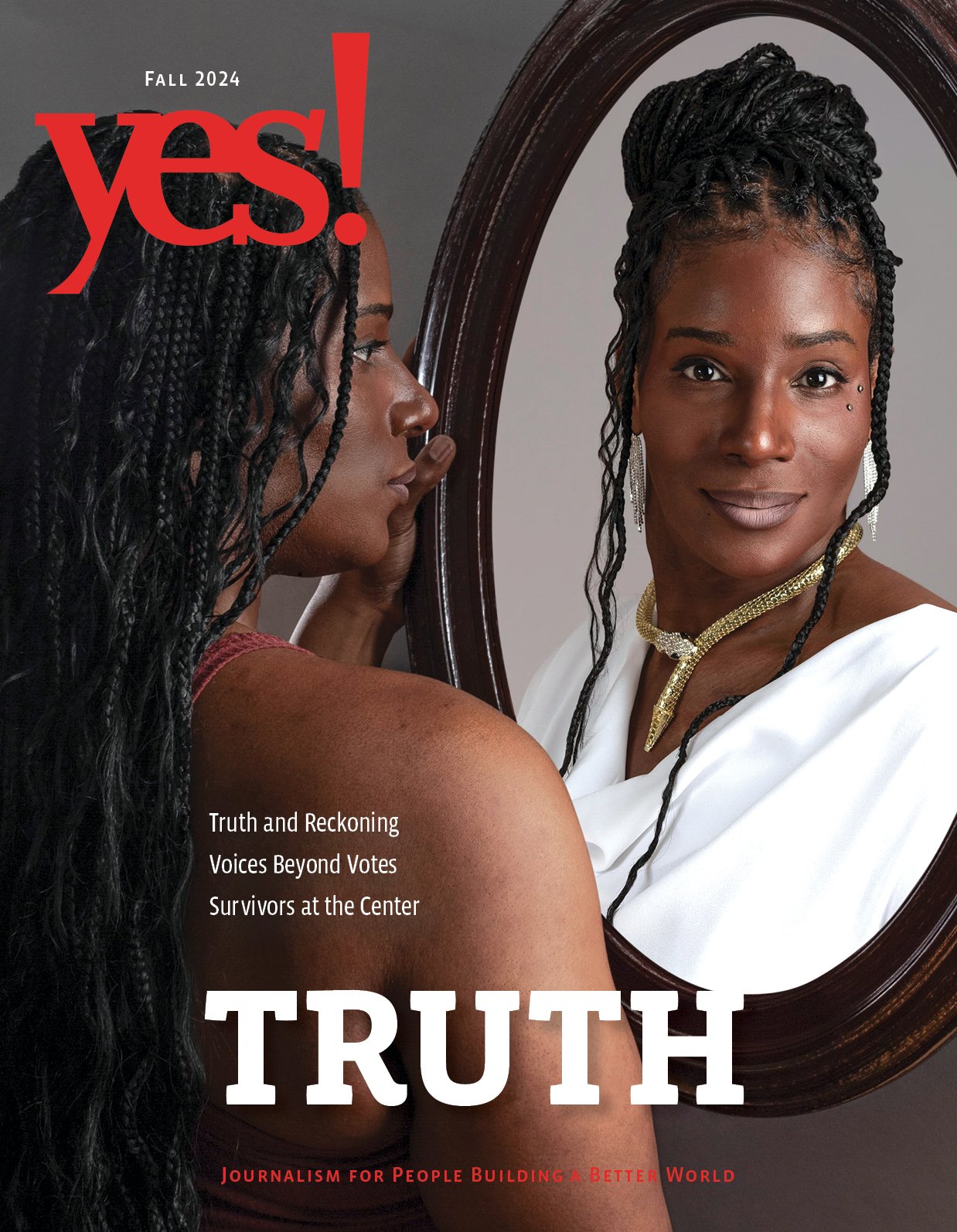In today’s hostile political climate, philanthropy must move beyond performative gestures and into authentic partnership.
Environment
Murmurations: Climate Solutions Require Black Ecology
Slavery and genocide fueled climate destruction. Black liberation will fuel regeneration.
New York Passes Climate Superfund to Make Polluters Pay
Could New York’s plan to fine fossil fuel companies work to curb the untenable costs of climate catastrophe?
Recovery in San Diego a Year After the Floods
To better prepare for climate disasters, cities must directly address legacies of discrimination.
Food Justice As a Path Toward Abolition
While food justice may seem unrelated to abolition, Leah Penniman sees them as intimately linked.
To Rescue a Self
This story is part of Imagine 2200: Climate Fiction for Future Ancestors, a climate-fiction contest produced by Grist Magazine.
The Isle of Beautiful Waters
This story is part of Imagine 2200: Climate Fiction for Future Ancestors, a climate-fiction contest produced by Grist Magazine.
Plantains in Heaven
This story is part of Imagine 2200: Climate Fiction for Future Ancestors, a climate-fiction contest produced by Grist Magazine.
Survivors of Eaton Fire Share Their Stories
YES! Senior Editor Sonali Kolhatkar’s family evacuated North Pasadena, California, alongside thousands of other residents.
A Crop for a Saltier Future?
With sea levels rising and groundwater running out, crops that thrive in saltwater could bolster future food supplies.
For Siċaŋġu Nation, Taking Food Sovereignty Back Means Eating Climate-Friendly
Mushrooms, bison, and foraged plants are a critical mix of new and old food traditions.
Can Everyone Eat for the Planet? I Shopped at Dollar Store for a Week to Find Out.
In 2019, scientists published a climate-friendly food plan. Can it work for most Americans?
Farmers Markets Can Be a Form of Climate Action. Here’s How.
Local food programs can make it easier to eat more fresh produce.
Rebuilding Food Security After a Wildfire
When wildfires swept through southern Oregon in 2020, Maria and her family lost 14 years of hard work almost overnight. Their home, their car, and most of their belongings went
How to Nationalize Minnesota’s Universal Breakfast Bill
Free meals for all school children is an essential element of education—and one the majority of people in the U.S. support.
High Hopes for Climate Reparations at COP29
Indigenous communities are already solving climate crises, but they need global funding to act decisively.
Time Running Out for Justice for Shiloh
Robert Bullard is calling on the Biden administration to compensate Elba, Alabama's Black community for environmental racism before Trump takes office.
A Tool to Tackle Climate Emotions
A wheel of climate emotions helps students navigate feelings about the climate crisis.
Divest From Death From Appalachia to Gaza
Appalachian Jews make the connection between climate disaster in Asheville, North Carolina, and U.S.-funded genocide in Gaza.
Storm-Ravaged North Carolina Rallies Voters
A coalition of progressive groups, including labor organizers, are connecting the dots on climate and the economy in North Carolina GOTV efforts.
Weather Data by and for the People
While Project 2025 would stymy climate data collection, a network of grassroots volunteers are braving hurricanes—including Milton and Helene—to collect and share local data that can ultimately save lives.
Turn Anger into Climate Activism This Election, Says Jane Fonda
According to the actor and activist: “The choice is very clear: Do we vote for the future, or do we vote for burning up the planet?”
Prisoners Deserve to Survive Natural Disasters, Too
When hurricanes Helene and Milton decimated multiple states, incarcerated people were left to fend for themselves. That can’t happen again.
Mutual Aid in the Aftermath of Hurricane Helene
A self-described "climate refugee" deals with the devastation of Hurricane Helene in Asheville, North Carolina.
A Progress 2025 Vision for Climate Justice
As Hurricanes Helene and Milton devastate the Southeastern U.S., Antonia Juhasz articulates a just vision for how to fix our climate.
Our Vision to Create the Best Stories Imaginable
In 2025, we will temporarily pause the printing of YES! Magazine.
LEARN MOREHelp Fund Powerful Stories to Light the Way Forward
Donate to YES! today.

























